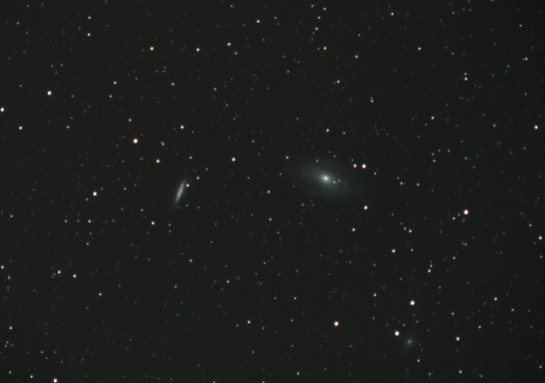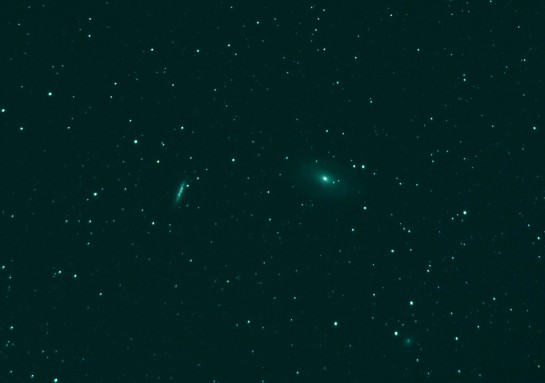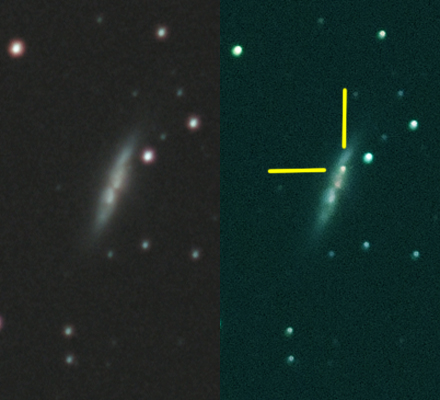I have become a bit of a comet addict in my astrophotography, and with so few opportunities to take advantage of clear skies in Cumbria, have neglected my other targets in favour of these elusive and challenging subjects. Yesterday evening I determined to spend time away from comets and catch myself a couple of galaxies.
M81 and M82, 12 million light years away in Ursa Major, were at good altitude mid-evening, rotating toward the zenith. The birthday fairy brought me a QHY5L-II CCD camera last month, which I can use for guiding my Altair Wave 115/805 on the Skywatcher AZ-EQ6 mount. Ten-minute subframes was my choice of exposure for the session. I suspect these might be achievable unguided, now that the mount is sorted, but I wanted to test the setup and familiarise myself with all that it requires. Humidity was high and the sky was lighter than I remembered at Old Hutton church carpark, so I kept the Nikon D90 at a low ISO of 400 for the long exposures.
Focusing was manual using a Bahtinov mask. Five frames came out well, one jumped during the guiding and was discarded. The full PixInsight processing sequence from Nikon RAW files was:
Convert to FITS
Calibrate (not this time though, I took neither dark nor flat frames!)
Debayer
Register (align)
Stack to average, using percentile rejection
Dynamic Background Extraction (eliminate the skyglow)
Colour Calibration (no more green-tinted pictures!)
Histogram Stretch
Saturation and background darkening using Curves
Noise Reduction
High Dynamic Range Multiscale Transformation (detail in the spiral arms)
Crop and convert to JPEG.
This is the full size JPEG after processing. I should get out more!
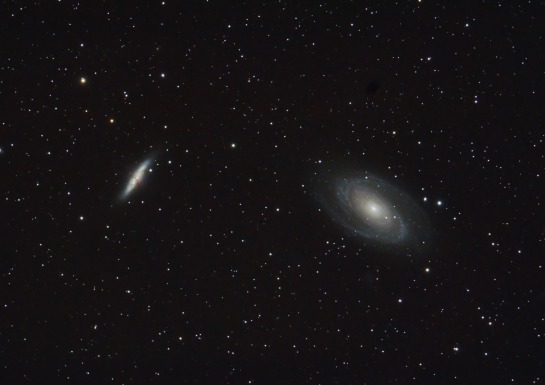
M82 and M81
Nikon D90 on Altair Wave 115/805 (f/7), ISO 400
50 minutes: 5 frames of 10 minutes each.
Here’s another version with some sharpening applied too. I separated the luminance data from the colour data, sharpened the luminance and blurred the colour before recombining. It’s a mixed result, definitely bringing out more detail but also I think it gives a slightly artificial edge to the galaxy. More practice needed…
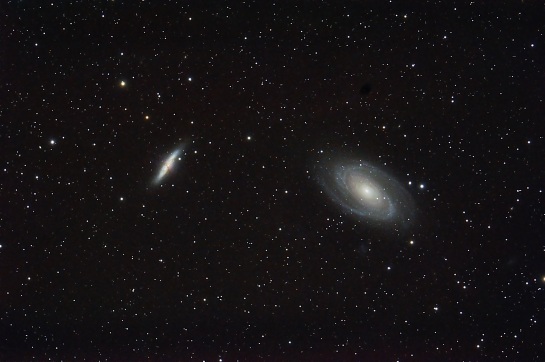
M82 and M81
Nikon D90 on Altair Wave 115/805 (f/7), ISO 400
50 minutes: 5 frames of 10 minutes each.

